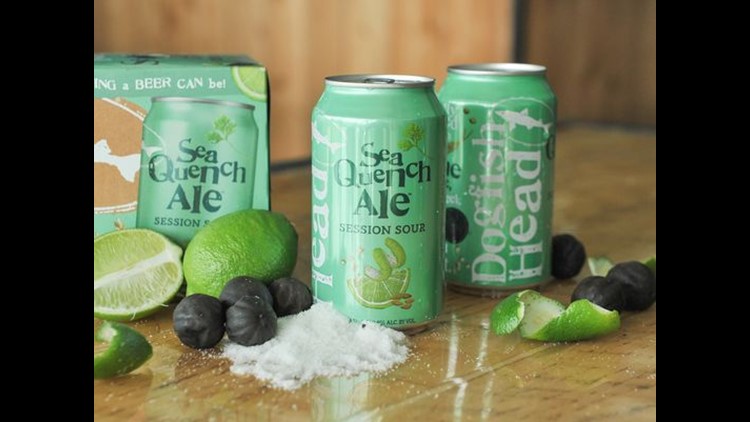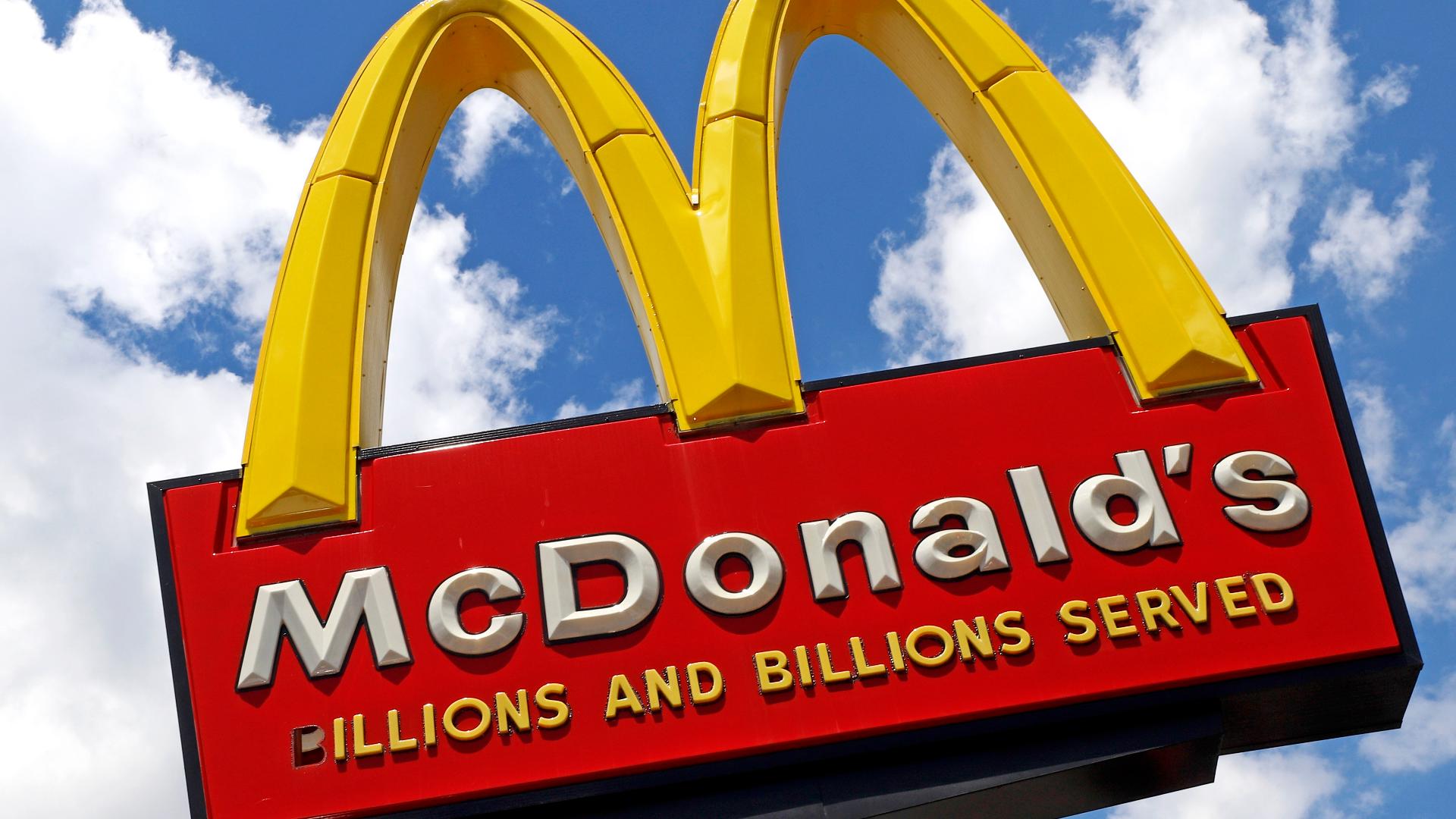For decades, beer has been marketed as a thirst-quenching, refreshing drink. But there's really only sketchy evidence that beers — even though they may taste great — actually are true thirst quenchers.
That hasn't stopped the imaginative beer makers at Dogfish Head Craft Brewery from trying to set a benchmark. Its new SeaQuench Ale, a tart, slightly sour lime-infused low alcohol beer with a dash of sea salt, is the result of more than two years of research, the goal of which brewery co-founder Sam Calagione says was to make "the most objectively thirst-quenching beer" that the Milton, Del.-based brewer has produced in more than two decades of operation.
People have been putting salt in their beer for ages and beers such as Bud Light Lime hit stores nearly a decade ago. Dogfish Head's bolder claims of SeaQuench Ale's thirst-quenching and mineral-replacing qualities could help it stand out in the still-growing $23.5 billion annual craft beer market — overall retail U.S. beer sales remain flat at $107.6 billion, according to the Brewers Association.
"They may hit a sweet spot with the barbecue crowd and the weekend warrior crowd, where session IPAs and light beers aren’t quite getting it," said Matt Hartings, assistant professor of chemistry at American University in Washington, D.C. "It’s something different."
SeaQuench Ale, "literally had to go through, by far, the most R&D that a commercial beer has ever gone through at Dogfish," Calagione said.
That's something from a brewery, founded by he and wife Mariah in 1994, which has grown into the country's No. 14 largest craft brewery. Among Dogfish Head's eclectic portfolio: a series of ancient ales including Midas Touch, Chateau Jiahu, and Birra Etrusca Bronze, all reverse-engineered from millennia-old remnants of liquids found in beverage vessels, unearthed by archaeologists in Turkey, China, and Italy, respectively.
Dogfish Head tapped an expert to ensure the beer's refreshment quotient relied on a chemical and scientific foundation. "Sam wanted to understand the science ... and see if we couldn't apply that to the brewing of SeaQuench Ale," said Bob Murray, managing principal of Sports Science Insights in Crystal Lake, Ill. Prior to starting the consulting group, Murray co-founded the Gatorade Sports Science Institute and served as its director for 23 years.
Most recent research shows beers that contain less than 5% alcohol by weight do not have a major dehydrating effect, Murray says. SeaQuench Ale fits that criteria at 4.9% ABV, more than a Michelob Ultra (4.2%), but less than a typical India Pale Ale (5.5%-7.5%). It also weighs in at 140 calories below that of a full-bodied IPA's 400 calories.
Its eventual ingredient list includes specifically chosen potassium-rich barley strains, sea salt from Maine and the Chesapeake Bay, formulated with the help of the National Aquarium in Baltimore, black limes, sourced from Egypt, Turkey and Guatemala, and lime juice.
SeaQuench Ale's use of sea salts not only enhances the taste but also infuses minerals — including calcium, chloride, magnesium, potassium, and sodium — known to help sate thirsts and replace lost electrolytes. "There are some similarities between SeaQuench Ale’s mineral content and other beverages including sports drinks," Murray said.


Most beers aren't that jam-packed with minerals, says Barry Gump, professor of beverage management at Florida International University's Chaplin School of Hospitality and Tourism Management in North Miami, Fla. "Because of the lime and the saltiness this is not going to be your typical beer," he said. "It could actually have a positive impact on how that satisfies one’s thirst."
Calagione knew he and his brewers were onto something even in the early going. Initially, he wanted to craft a beer to celebrate last year's opening of Dogfish's Chesapeake and Maine restaurant in Rehoboth Beach, Del., and the 500th anniversary of the Reinheitsgebot, the beer purity act decreed by Duke Wilhelm IV of Bavaria requiring beer be made only with barley, hops, and water.
For Dogfish Head and Calagione, the Reinheitsgebot represents a "white whale" the brewery has challenged since opening. Among the culinary ingredients in past and current Dogfish Head beers: raisins, blood orange juice, peaches, apricots, coconut, lobster, chocolate, cocoa, granola, wasabi ... and parsley, sage, rosemary, and thyme.
"I wanted to brew a beer that would be the ultimate partner for sipping while hanging out at the beach with friends all afternoon long and ending that day using the beer as an accompaniment for an epic seafood feast," he said. Beyond that, he also wanted to pay tribute to "some very awesome refreshing German beer styles, but put our own culinary thumbprint on it."
The first attempt yielded a golden ale, a Kolsch, with lemon juice and celery salt. Eventually, limes, lime juice, and the sea salt were substituted, while the beer became a mashup of three different German styles of beer: Kolsch, Gose and Berliner Weisse. More than a year of testing resulted in a suitable multi-beer blending process.
Calagione says he contacted Murray at Sports Science Insights after "I started thinking not only could this beer be super-refreshing tasting, but I’m confident if I start analyzing it on a molecular level the types of natural culinary ingredients we were adding to it were going amplify the types of mineral and electrolyte content."
Dogfish Head began distributing the beer in March and it won't be fully available in its 36 states (and the District of Columbia) until next year. But already Men's Health named it an editor's choice as best low-calorie beer for men.
And demand so far from retailers and restaurants is more than twice what the brewery expected. "More than any beer we've ever made, this is pulling drinkers from wine and margaritas," Calagione said. Distributors are telling him that "at Mexican and Spanish restaurants, people are loving how it pairs with that kind of cuisine."
Follow USA TODAY reporter Mike Snider on Twitter: @MikeSnider.



